 |
Western Electric Telephones
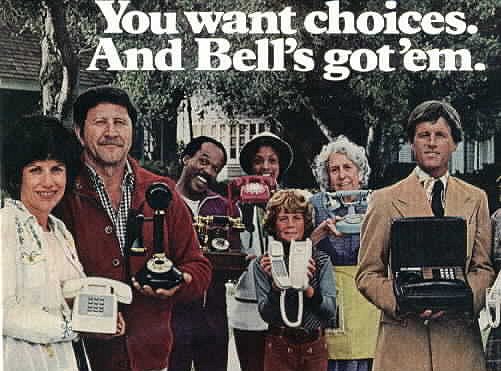
Western Electric telephones made prior to the breakup of the Bell System
(January 1, 1984) were designed and built to last for decades. If a Western
Electric phone ever quit working your local Bell Operating company would
send out the "telephone man" to your house and fix it for free. Those
days of quality built telephones and free visits to your home by a telephone
repair person are gone - replaced by cheap throw-away phones from Taiwan and
China. This web page is your starting point for technical
information, photos, FAQ's, posters, charts, etc. on Western Electric
telephones.
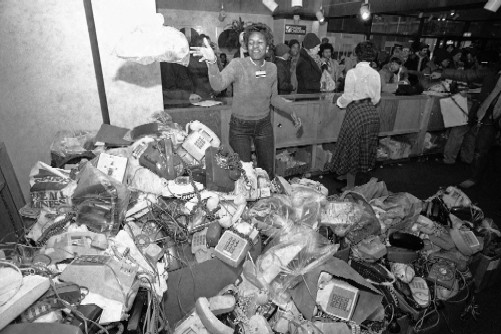
Bell Phone Center employee tossing returned Western Electric
phones that will end up at the Western Electric Recycling
Depot to be either refurbished or scrapped.

We Offer Personalized One-On-One
Service!
Call Us Today at (651) 787-DIAL (3425)


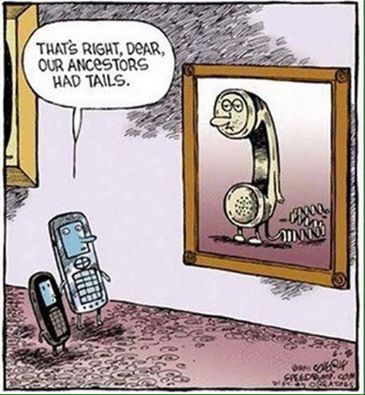

TABLE OF CONTENTS:
The
Telephone Book - Western Electric sales/marketing info on the Design
Line telephones as well as the standard phones available around 1980.
Bell Ringing
Problems - Some things to try if your Western Electric phone does
not ring.
PARTS AND REPAIRS - a Bell System
Memorial public service "Yellow Pages" listing of collectors and dealers of
antique telephones and parts for old phones.
Common Western Electric telephone models:
NOTE: An excellent website by
Paul Fassbender lists the various
models of Western Electric phones along with the Bell System Practices index for
these models. Click
HERE
for his home page.
Also, Jeremy Walters sent us a
color copy of "The Bell System's Line of New Products and Services" brochure
which you can view by clicking
HERE.

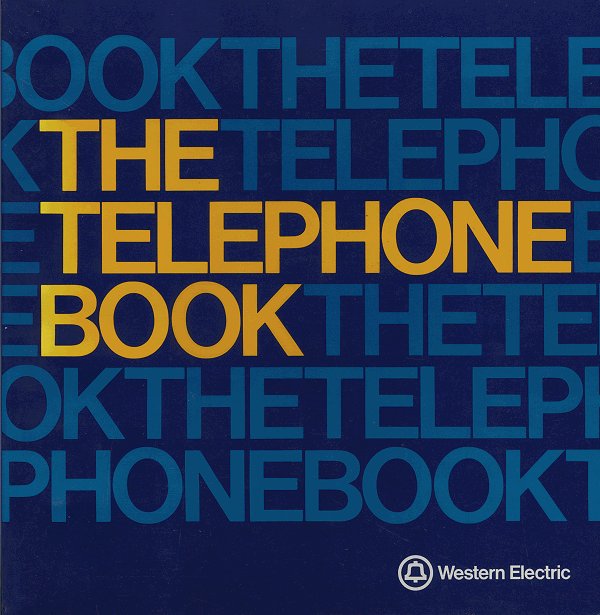
For general information on the Western Electric
phones that were in use in the 1970's and early 1980's, please click
HERE or on the image above for scans of Western Electric sales literature of various models.
NOTE TO DIAL-UP MODEM USERS: This is a LARGE
file so plan on waiting a long time to download it.

Does
your Western Electric 500 telephone not ring but you can still dial a call and
both sides of a conversation are audible? Then try moving the ringer's
black wire to the network terminal marked "L1". See
schematic and
photo for more info.
Does your Princess 702B phone not ring? Does it have a
5-conductor line cord (yellow, black, white, red and green wires)? Try placing a
jumper wire from terminal "L1" to terminal "G" on the network box inside as
shown in this modified Bell System
drawing.

FAQS:
If you have a vintage Western Electric phone (or
phones) that you would like to use on today's phone lines, read on. If
your phone predates the 1950's you may find some information on your model
HERE. General FAQ's about
wiring vintage telephones to work on today's analog telephone lines follow
this paragraph and then you will find links to specific models for more
detailed information including photos and schematics.
Q. How can I tell if
the modular handset cord or line cord on my telephone is genuine Western
Electric or has been replaced by a cheap generic brand?
A. You should see the
letters "WE" molded on the little plastic retainer tab of the modular plug as
seen in this photo.
Q. What were the model
numbers and names of the later models of Western Electric telephones?
A. Refer to the
following sketches (click on a sketch and you will go to that model's web
page):

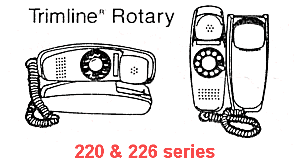
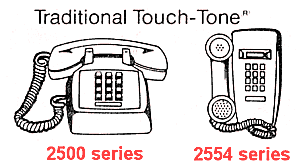
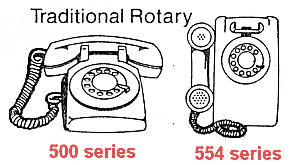
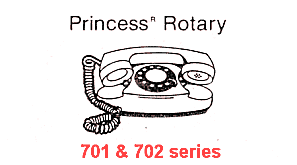
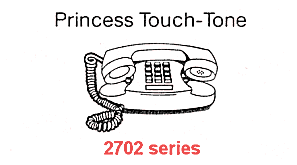
Q. My model of Western
Electric phone is older than those shown above. Do you have a web page
on the older models?
A. I have information
on some of the older models HERE.
Q. How about the newer
phones like the "doughnut" phone that Western Electric made but are not shown
above?
A. I have information
on the so-called "Design Line" phones
HERE. Also, check out the end of this web page for some other types of
Western Electric phones.
Q. My phone gets a dial
tone but doesn't ring. What can I check first to make sure the bell is
not broken?
A. There are a few
common reasons for this (beyond a broken ringer or internal network).
-
Back in the days when the Bell System
charged customers extra for "extension phones" (defined as any phone other
than the one primary phone they gave you as part of the monthly service
cost) people would disconnect the bell's coil from the internal network
terminals. This would make the phone "invisible" to the Bell Telephone
Company technician running "impedance" checks on a phone line. Each
working bell of each phone in a customer's house would add a load which was
easily detected by test equipment. So the first thing to check is the
wires coming from the coil on the bell (ringer) assembly to see if they are
hooked up to anything inside the phone. Some coils have only two wire
leads (newer phones) and other coils have four wire leads. If you find
loose wires from your bell's coil then there is a good chance they were
disconnected by a previous owner of the phone to avoid detection of the
phone by the local phone company.
-
Another wiring issue that can cause the
bell not to ring is the possibility that the phone was wired for
"party-line" service which would prevent the phone from ringing on today's
"private-line" (single-party) service. The yellow wire in the old line cords
are no longer used for party identification.
-
There is a possibility that the loudness
control on the phone was modified internally to allow the ringer to be
silenced. See Western
Electric Ringers web page for more info.
-
And last but not least, the
"bias spring" on the ringer
assembly may be set to the low sensitivity setting which would
prevent it from ringing or ringing reliably if you already have a bunch of
phones in your house. The bias spring setting is easily changed in
most phones and in most cases all you need is a finger to make the
adjustment once you have the phone apart.
Q. My
touch-tone phone gets dial tone and rings but I can't dial out. I don't hear
any tones when any of the buttons are pressed - just a weak clicking sound.
What could cause this?
A. Some of the vintage
Western Electric touch-tone phones were polarity sensitive meaning that if the
wires going to the telephone jack contacts were reversed the dial would not
make tones. It's a simple fix - just reverse the red and green wires in
the telephone jack in the wall and the phone dial should then work.
Later model Western Electric phones had "polarity guard" circuits installed
which allowed the phones to be wired in either direction.
Q.
How much is my phone worth?
A. We don't do appraisals or even try to
give "ball park" figures. If you want an appraisal or estimate of worth,
please contact the following organization:
Appraisal of
Historical Items
WhatsItWorthToYou.com.
WhatsItWorthToYou.com is independent of The Porticus Centre and have
trained specialist in various categories that will help in
determining the true value of your item(s). At Porticus, we do
not know the value of items, we simply are a historical database of
documentation.
Q.
What happened to Western Electric?
A. The named changed
several times after the breakup of the Bell System. One of the names
which still exists is Lucent Technologies.
Lucent then sold it's entire consumer telephones operations to VTech, Inc.,
who has set them up in a new division called "Advanced American Telephones".
This division will make all the consumer phone equipment under the AT&T name.
The Enterprise Equipment, (Merlin, Definity, Spirit, Dimension, and other
business related communications equipment was spun-off by Lucent and became
Avaya, Inc. The structured cabling business of Western Electric, which
was part of Lucent, was also spun-off the same year, 2000 and was part of
Avaya. This business was more commonly known as AT&T Network Systems or
Systimax PDS (Premises Distribution Systems). SYSTIMAX was sold to
CommScope, Inc. in 2004, however, the Systimax business still manufactures
cabling, phone and data jacks, and computer Ethernet cords here in the U.S.A.
at the former Western Electric plants. The distance between the great days of Western Electric and what's left of it
now have become greater, and even more diluted. It's interesting to note
that Lucent was acquired by Alcatel of France in 2006. The name of the
combined company is Alcatel-Lucent.
 Panel
Telephone (model 750)
The Western Electric panel
phone mounted into a wall. A lucky visitor to this web site has a model
750B in NOS (New Old Stock) condition made in 1969! His name is Stefan Schmaus
and he lives in Germany. Here are links to some photos of his phone:

CARD DIALER
TELEPHONE

NOTE: Due to
the huge PDF file size, this document is not on the web server.
A big thanks to Russ Pate who sent copies of
the pages from the manual to scan.
Automatic Card
Dialer Telephone - A rotary dial version can be seen in this 21-second
video clip
from the 1962 Seattle World's Fair Bell System movie called "Calling Century
21". Using punched plastic cards, customers can "speed dial"
their calls. Large file; 4.4 Megabytes!

Test Set Phone
(A.K.A., the "butt-set", as in
"butting into a conversation" which is one use for this item)
"The term "butt-in" and
"butt-out" came from telephone terminology. The reason for the name
Butt-set, is that this device is named after the inventor Mr. Buttinsky. I have
seen cut sheets from Graybar for Harris -Dracon TS-21 sets that refer to them as
Buttinsky's. The telephone industry was one of the largest employers, so
it is not surprising that many phone-related terms became common usage." -
James Stettler
This is not a phone like you would have in your
home unless you are a phone collector like me! It was used by the
"Telephone Repairman" to troubleshoot problems in phone line
circuits or to monitor, break in (or "butt in") to a telephone
conversation already in progress.
The following
information was contributed by Dennis D Hock and Steph Kerman:
"The official Bell System model number of a
test set like this is 1013 if equipped with permanent clip leads for an
installer/repairman or 1014 if equipped with an interchangeable test cord plug
for CO/PBX use. The earlier 1011 variations were distinguished by letter
suffixes as was the later 1015 test set with pushbutton dial. However no
difference in 1013/1014 code regardless of whether it was blue, yellow or
orange. (Obviously they were already beginning to "lose it" when they
did this.)" - Steph Kerman
"The circuit is a very basic type which
utilizes a capacitor, resistor, inductor, T1 transmitter and a LA1 i think
receiver. The Monitor switch is used to create a circuit similar to that in the
302AA, 500E/F sets, that is a high impedance bridge to monitor. It is not high
enough that it won't attenuate data service however. This is formed by using the
capacitor in series with the receiver the switch and the line. In talk mode the
inductor in series with the transmitter and
bridged by the receiver and the capacitor." - Dennis
"Actually, the iron core device is a
bridging transformer with hi-Z (10K?) primary winding to permit monitoring
on data circuits at a much higher impedance than would be possible without a
transformer. The transformer is as best as I recall used as an inductor
during talking to keep DC out of the REC so that the REC can be protected
with a varistor for click suppression.... a refinement not found on the 1011
which used a simple series circuit.
There is a BSP in the 100, 103 or 106 BSP
divisions describing various cord configurations. and showing a schematic.
BTW the dial is a standard #10A Trimline dial
except equipped with a porcelain number plate." - Steph Kerman
(Return to beginning
of this article)

Bell System Practices
Station Service Manual
Volume 1 (Nov. 1982)
Please
Note: These documents are posted for non-commercial use by hobbyists, collectors, etc. For
commercial use, please order BSP reprints from LUCENT TECHNOLOGIES shown at
top of this page.
If you have a need for any other material from
the Station Service Manual as shown in the table of contents BELOW but not yet available
from this web site, please contact us and we will send a scan to you via return e-mail. The images are very large to allow good
resolution and you will probably need to scroll up/down and left/right to see the entire
images.
|
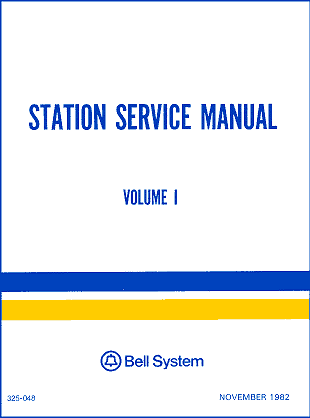 |
| TABLE OF
CONTENTS:
NOTE: Since this page is updated as specific
requests are received from website visitors, only those items with
hyperlinks below are available at this time. If you see something in
this list that has no hyperlink(s) and you need a copy of the item, please
write us. The latest scans I
have done are available as GIF format or PDF format. Most sections that have
been scanned have been removed from this table of contents and placed with
the specific web page for that model (like the
500 series).
GENERAL AND ASSOCIATED APPARATUS
Auxiliary Signals - Identification, Installation,
Operation, Maintenance, and Connections
Inductive Noise
Station Ringing Apparatus - Selection and Limitations
Radio Signal Suppression for Telephone Sets
Packaging and Handling - Disconnected Station Apparatus
Buzzers and Bells - Identification, Installation, Maintenance, Limitations, and
Connections
Station Transformers
MIA Handset
G6-, G7-, G8-, G13-, G66-, and K6-Type Handsets (Amplifier)
G36-Type Handset
238, 276, and 277 Types Amplifiers
151-, 241-, and 242-Type Amplifiers
315-Type Amplifiers
Telephone Sets and Associated Station Apparatus - Selection of Indoor Locations
Modular Type - General information
581A Telephone Set Bases (wiring page 1) (wiring page 2)
FUNCTIONAL SETS AND ADJUNCTS
1200AR1
and 1200AT1 TOUCH-A-MATIC 12 Automatic Dialer
5001T01A TOUCH-A-MATIC Telephone Set, S Series
5011T01A TOUCH-A-MATIC Telephone Set, S Series
|

OTHER TECHNICAL INFORMATION
-
Handsets - Identifying
various Western Electric handsets
-
Networks found in Western
Electric phones
-
Ringers (electromechanical
bells) in Western Electric phones
-
Dials -
Touch Tone or
Rotary
-
Wiring
Product Standards - Official AT&T/Western Electric part numbers for
various connectors and wiring tools.
-
Western Electric Phone assembly drawings with main part numbers:
-
Modern Candlestick drawings:
LAMP INFORMATION
The following information, supplied to me by Steve
Schlink, concerns some of the various bulb types used in Western Electric phones
(for Princess phone bulb information, see the
Princess Phone page.)
|
Lamp # |
Voltage |
Base |
Life |
EFC |
COMMENTS |
|
|
|
|
|
|
|
|
51 |
7.5 |
Min. bayonet |
1,000 |
|
|
|
51A |
10 |
ANSI #6 |
15,000 |
460 |
1A2 Lamp |
|
51B |
6 |
ANSI #6 |
20,000 |
1580 |
|
|
52 |
14.4 |
min. screw |
1,000 |
|
|
|
52A |
24 |
ANSI #6 |
8,000 |
430 |
|
|
53 |
14.4 |
min. bayonet |
1,000 |
|
|
|
53A |
10 |
ANSI #6 |
15,000 |
460 |
|
|
53B |
6 |
ANSI #6 |
5,000 |
1580 |
|
Steve's notes follow:
-
ANSI #s refer to the wedge at the very tip of the lamp,
not the overall dimensions.
-
EFC - End Foot Candles
-
The only difference between a 51B & 53B is that the 51B
is .11 inches longer - the electrical specs are identical, and both are 240
ma. while the 53A is only 40 ma. @ 10V.
-
Another lamp is the
53S which is believed to be used in the
older Trimline phones (non-LED
versions).

THE
ZONES!
HERE
is an interesting (if not somewhat entertaining) chart showing the "zones"
from a central office location where certain models of phones were designed
to work best. It was published by the Bell System and donated to this
website by Paul Wills. If you would like to download the PDF format of this
document for printing, click HERE.

Miscellaneous:
The Number Card Archive
If you need a copy of an original rotary dial phone number card or
want to know more about this topic, you've got to visit the
Number Card Archive!
Rare colors of Western
Electric phones in like-new condition command large sums of money on
ebay. A recent example of this occurred on May 26, 2001 with a blue model
302. Here are the photos of that phone which sold for $3,949.99 on eBay
(Item #1147731969).
"However, if you exclude the top two bidders'
foolishness you get bidder #3 at $999.57. That's about market value on this set.
Don't think that a blue WE302 is suddenly as valuable as a San Francisco
potbelly. this was a combination of a fluke and a grudge match. who was it who
said "a fool and his money are soon parted"?" - quote and paraphrased from
Jonathan D. Finder, ATCA member.

From AT&T "Notes on Distance
Dialing" 1975:
Section 5. 9. Audible tone signals
- thanks to Tony Roza for this info.

Dial Telephone Switching
Equipment
As the telephone business grew, central
offices grew in complexity. The switchboards were something to behold; many
operators sitting in long rows inserting plugs into countless jacks. The cost
of adding new subscribers increased in geometric proportions, causing one
general manager to write that he could see the day that he would go broke
merely by adding new subscribers.
There was a need for a break through of
some kind. Almon Strowger went a long way towards providing it by developing
the first dial system, called Step‑by‑Step. Other electromechanical
systems that followed were: Panel and crossbar. Though these
three systems differ considerably, they are all activated by electrical pulses
from rotary‑dial telephones, which set into action a complex arrangement of
relay‑controlled contacts. The advantages of automatic switching over manual
switchboards include faster, more reliable service and reduced costs to
subscribers.
Dial telephone equipment evolved to
allow automatic dialing capability for telephone subscribers. Dial equipment
is activated the moment the telephone handset is removed from its cradle on
your phone instrument. An electrical connection is made to signal the
automatic switching equipment in the exchange office to connect dial tone to
your line.
The dial tone has the same meaning as
the manual switchboards operator's "Number, please." It means the: switching
equipment is ready to handle your call and you can now dial your number.
The first three digits of a local 7
digit telephone number determines the central office number; the last 4 digits
identify a particular subscriber's line in that office.
When a number is dialed, the switching
equipment counts electrical pulses made by the dial wheel as it returns to its
normal position. Each pulse represents a digit. For example, when the number 4
is dialed, 4 pulses are counted by the switching equipment as the dial wheel
return to normal. A particular series of digits dialed identifies the
telephone number of the desired subscriber.
When all digits of the called number are
dialed, the connection is made to the called subscribers line.
Ringing current is sent out on the line
causing the ringer to ring in the called subscribers telephone. Once the
connection is made and the called subscriber answers, ringing current is
removed and conversation can begin. The connection is released when either
party hangs up.
Step by Step System
Step by Step is the oldest and simplest
dialing system. It is a form of direct‑dial control, in that switches are
directly responsive to dialed digits for each stage of the dialing process.
The heart of this system is a relay
operated switch with a vertical rod with horizontal wipers affixed to it. As a
digit is dialed, the rod with wipers moves up the banks of terminals the
number of pulses of the digit dialed‑ The rod and wipers then rotates on the
banks of terminals to an idle contact and connection to the next switch is
made. Each succeeding digit dialed activities another switch, building a
step‑by‑step connection through the central office. When all digits have been
dialed, the connection is established and ringing current is applied to the
line.
Step‑by‑Step was the predominant
switching system for the first half of the century and remained the system of
choice for small communities until the 1970's.
Crossbar System
Crossbar equipment, like the Panel
System, uses common control equipment to increase efficiency and speed of
calling. The Crossbar switch consists of a horizontal bar, a vertical bar, and
a contact spring that causes contacts on the switch to close and establish a
connection through the central office.
All digits dialed are received and
stored in an originating register units, senders, and various common control
equipment activated to establish a connection from subscriber to called
subscriber.
Crossbar Systems are extremely fast in
making connections and can handle calls with more speed than other systems.
Generally this type system was used for big city operations after 1938.
Panel Connector Frame
The panel system is partly a common
control switching machine. It has the capability to store any digits dialed
after the dial tone is received.
As digits are received by senders,
switching equipment move: into action by causing brass rods with multiple
brushes or wipers to move upward on banks of term'‑.pals to locate air
available trunk to the office or number called. Other sender. operations then
select the telephone number which was dialed and a connection through the
office is completed. Ringing current is then applied to the called subscribers
line and the ringing starts at the called subscriber's telephone set.
After establishing the connection to the
called subscribers, the senders and associated equipment are released to
handle other calls.

|

